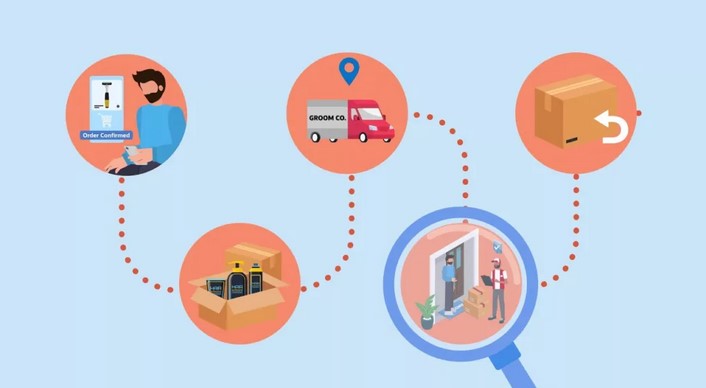
In today’s fast-paced, technology-driven world, businesses of all sizes are increasingly turning to virtual assistants (VAs) as a strategic move to enhance productivity, cut costs, and streamline operations. Hiring virtual assistants has become a smart business move that allows entrepreneurs and organizations to delegate time-consuming tasks without the need for physical office space, saving both money and resources. Virtual assistants can handle a wide range of administrative, technical, and creative duties, enabling business owners to focus on what matters most: growing their companies. This article explores the numerous benefits of hiring virtual assistants and why they have become an indispensable resource for businesses worldwide.
Why Hiring Virtual Assistants Makes Sense for Your Business
As a business owner, managing day-to-day tasks such as scheduling meetings, managing emails, handling customer inquiries, and updating social media can easily overwhelm your workload. Hiring virtual assistants provides a solution to this issue by offering access to skilled professionals who can work remotely and handle specific responsibilities that would otherwise consume your valuable time.
One of the primary advantages of hiring virtual assistants is that it allows you to scale your business efficiently. Whether you need help with short-term projects or long-term tasks, virtual assistants can be hired on a flexible, as-needed basis, allowing you to pay only for the services you require. This means you can focus on higher-value tasks such as strategic planning, business development, or customer relationship management, without getting bogged down in administrative work.
Additionally, virtual assistants bring a diverse skill set to the table. They often specialize in specific industries or areas such as social media management, customer support, data entry, content writing, and more. By outsourcing these functions to qualified VAs, you gain access to expertise that would otherwise require hiring multiple full-time employees, ultimately saving your business both time and money.
Key Benefits of Hiring Virtual Assistants
1. Cost Efficiency
One of the most compelling reasons to hire a virtual assistant is the potential for cost savings. Hiring a full-time employee requires providing benefits such as health insurance, retirement plans, paid time off, and office space. In contrast, virtual assistants are typically independent contractors, meaning you don’t have to worry about providing these perks. Furthermore, you can avoid expenses related to office equipment and real estate, as virtual assistants work remotely from their own locations.
With virtual assistants, businesses can also save on training costs. VAs often come with specific skills and experience, meaning they can hit the ground running without extensive onboarding or training. This results in quicker integration into your team and faster task completion, further reducing overhead costs.
Cost savings with virtual assistants include:
- No overhead costs for office space or utilities.
- No need to offer employee benefits.
- Pay only for the actual hours worked.
2. Flexibility and Scalability
Virtual assistants offer businesses a high degree of flexibility and scalability. Whether your business experiences seasonal peaks or fluctuating workloads, hiring virtual assistants allows you to scale your team up or down as needed. For example, if you require extra support during a product launch or a major marketing campaign, you can hire a VA on a temporary basis to meet your demands without the commitment of a full-time employee.
Additionally, virtual assistants are often available to work across different time zones, meaning your business can operate around the clock. If you have a global customer base or need to manage tasks outside of regular business hours, hiring virtual assistants in different time zones can help you maintain 24/7 productivity. This flexibility not only makes it easier to meet deadlines but also improves overall operational efficiency.
Scalability advantages of virtual assistants include:
- Quickly scale your workforce based on workload demands.
- Utilize VAs across multiple time zones to extend business hours.
- Choose part-time, full-time, or project-based engagements.
3. Enhanced Productivity and Focus on Core Business Activities
When you hire a virtual assistant, you’re freeing up time and mental bandwidth to focus on more critical aspects of your business. Whether you’re an entrepreneur managing a startup or a CEO overseeing a large company, hiring a VA allows you to delegate routine administrative tasks, giving you more time to work on strategic decisions, long-term planning, and customer relationships.
Moreover, since virtual assistants are specialized in handling specific tasks, they can often complete these duties more efficiently than someone juggling multiple responsibilities. This efficiency improves your overall productivity and ensures that important tasks are completed in a timely manner, allowing your business to grow and thrive.
Improved productivity benefits of virtual assistants:
- Focus more on high-priority, growth-driven activities.
- Delegate repetitive administrative tasks to qualified VAs.
- Ensure tasks are completed accurately and on time, enhancing workflow.
How to Find the Right Virtual Assistant for Your Business
The process of hiring the right virtual assistant for your business can be broken down into a few key steps:
1. Determine Your Needs
Before you begin the hiring process, clearly define what tasks you want to outsource. Do you need help with administrative work, customer service, or content creation? Are you looking for a general VA or one with specialized expertise? The more specific you are about the roles and responsibilities, the easier it will be to find a VA who can fulfill your needs.
2. Look for Relevant Skills and Experience
While there are many platforms that connect businesses with virtual assistants, such as Upwork, Fiverr, and Freelancer, it’s important to choose a VA with the right skill set and experience for the job. Consider reviewing their portfolio or conducting a trial period to assess their work quality. It’s also helpful to look for VAs with industry-specific experience if you require specialized knowledge.
3. Set Clear Expectations and Communication Guidelines
Once you’ve found the right VA, ensure that both parties are aligned on expectations, tasks, and timelines. Establish clear communication channels (such as email, video calls, or project management software) and set measurable goals to track performance. Maintaining open communication is key to fostering a positive working relationship and ensuring that both you and your VA are on the same page.
In conclusion, hiring virtual assistants is a smart business move that can lead to significant cost savings, enhanced flexibility, and increased productivity. Whether you’re a small business owner looking to scale or a larger enterprise aiming to streamline operations, virtual assistants can handle various tasks with expertise, freeing you up to focus on growing your business. With the right approach to hiring and managing virtual assistants, your business can unlock the potential for greater efficiency, improved customer service, and sustained success in a highly competitive market.



